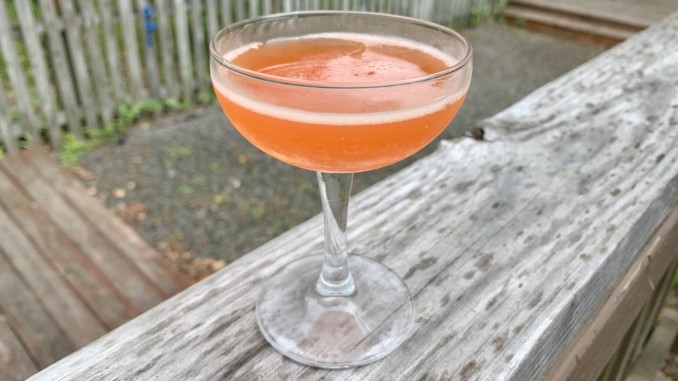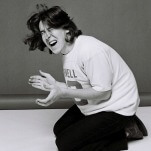Cocktail Spotlight: The Paper Plane
Photos via Jim Vorel
Cocktail Queries is a Paste series that examines and answers basic, common questions that drinkers may have about mixed drinks, cocktails and spirits. Check out every entry in the series to date.
There’s not exactly some universal criteria out there by which you would designate a cocktail as a “modern classic,” per se. For a drink to break into the pantheon occupied by so many enshrined in decades earlier, though, is no easy thing to pull off. Perhaps you could say that a cocktail passes that test when it becomes ubiquitous enough that bartenders everywhere know it, to the extent that you could walk into any well appointed cocktail bar, ask for it by name, and the bartender would immediately know what you’re talking about. One thing is for certain, though: If any cocktail invented in the last 20 years is going to qualify for that title, then surely the Paper Plane is going to be one of the first mentioned.
That’s quite a thing, for a drink that is still only 16 years old, at the moment. But it speaks to the perfect combination of elements found in a Paper Plane–the whiskey, aperitif, citrus and amaro–that come together to make something that seems to be almost universally appreciated. Perhaps it’s not going to be the favorite cocktail of snobbier spirits cognoscenti, but I don’t know if I’ve ever met anyone who disliked the Paper Plane the first time they had it. This is one of the ultimate “introduce someone to cocktails” drinks.
Any piece on the Paper Plane must of course acknowledge that it was created in 2008 by award-winning bartender Sam Ross, the proprietor of multiple NYC cocktail haunts. In this case, it was originally made for Chicago’s Violet Hour, and as the name might imply it was a reference to the MIA song we all remember from Slumdog Millionaire. The genius of the Paper Plane, though, was its simplicity rather than its bombast.
This drink is so often described as being a Last Word riff, but I really don’t know if that’s the best way to think of the Paper Plane. Whereas the Last Word is a pretty bracing drink, balanced between herbal sweetness and sturdy bitterness from Green Chartreuse, the Paper Plane is a much friendlier, sunnier dram that isn’t really trying to challenge the customer ordering it. Like the Last Word, it’s a four part recipe of equal pieces–spirit, liqueur, bitter elements, citrus–but the alchemy works out to an entirely different vibe. The Last Word is a drink you can nurse; the Paper Plane is a drink you can quaff. It’s a “starting the night,” 5 p.m. cocktail hour kind of drink.
Here’s the recipe:
— .75 oz bourbon whiskey
— .75 oz lemon juice
— .75 oz Aperol
— .75 oz Amaro Nonino Quintessentia
Combine all ingredients in a cocktail shaker tin. Fill with ice, shake well, strain into a cocktail glass, coupe or Nick and Nora glass. Garnish with a twist of lemon, if available.
Simplicity itself–and a rather brilliant move on the part of Ross, creating a drink whose recipe is so easy to instantly remember (and prepare).
With that said, there are certainly ways that making a Paper Plane can go off the rails, because at the end of the day this is actually a cocktail that favors a certain level of restraint. For instance: Unlike something like the Old Fashioned or the Manhattan, where we constantly harp on the best practice of using 100 proof bourbon or rye whiskey, the Paper Plane’s more delicate presentation does just fine with your more approachable 86, 90 or 94 proof bourbons. Bottled in bond will always be an option, but the goal here isn’t to “feature” the whiskey in the same way that an old fashioned or Manhattan would. The goal is to not stray from the golden balance this cocktail achieves when made correctly. Some drinkers have a difficult time breaking their assumption that “more = better.”
I should clarify that it wouldn’t be strictly accurate to refer to the flavors of a Paper Plane cocktail as “balanced,” per se, in terms of which ones present themselves. It definitely favors a sweet-tart profile overall, and it’s never really genuinely challenged by the mild bitterness contributed by the Aperol or the Nonino. What this drink does have is balance of assertiveness in each ingredient, and that’s key–the drink isn’t dominated by whiskey, or Aperol, or the amaro, or the citrus. Whereas I would fully support you experimenting with amari other than the classic Averna in the Black Manhattan we recently spotlighted, the same can’t be said for the Paper Plane. It needs the Nonino, because the Nonino is uniquely lighter and approachable among amari. Try to swap in something like Averna or Montenegro here and your Paper Plane is going to be dramatically weighted in the direction of the amaro flavor profile, and the delicate homeostasis between elements will be lost. For these reasons, this is the rare recipe where I would recommend always making it exactly as written in the original recipe, if you want it to actually evoke “a Paper Plane.”
Because at the end of the day, a well-made Paper Plane is sort of like a well-made daiquiri, in the sense that the perfect level of dilution and balance renders it as an extremely easy to drink cocktail. When you’re served a Paper Plane, it’s common to feel like you could easily down it in a couple of big gulps, wonder where the booze is, and then suddenly wobble when you go to stand up 10 minutes later. It’s that kind of drink, dangerous in its own way even if it’s not as bold as some of the other modern classics that would join it in the pantheon.
So go out and buy that bottle of Nonino you’ve never gotten around to acquiring. It’s the last step in mixing up a modern classic.
Jim Vorel is a Paste staff writer and resident beer and liquor geek. You can follow him on Twitter for more drink writing.







































